SPARTANS
Mon Dec 22, 2008 10:49 pm
This is one airplane I would give up the Waco for....however, no one is that stupid to trade me. For now I can only wish.......
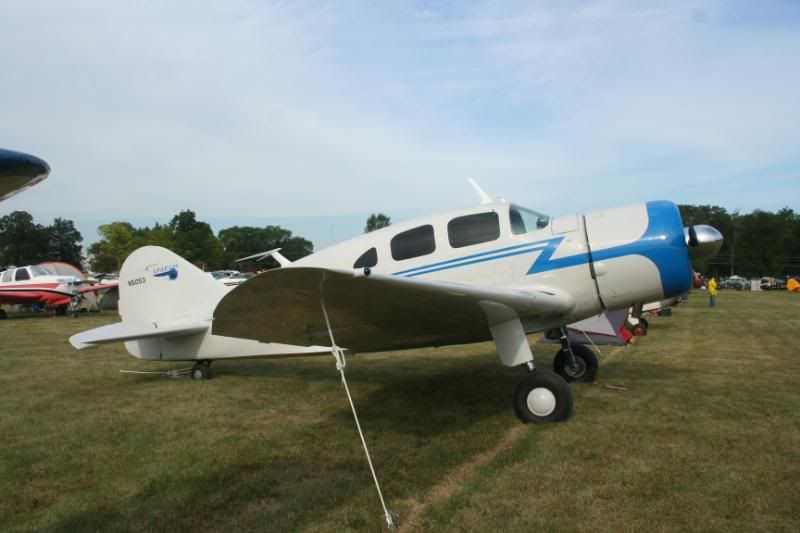
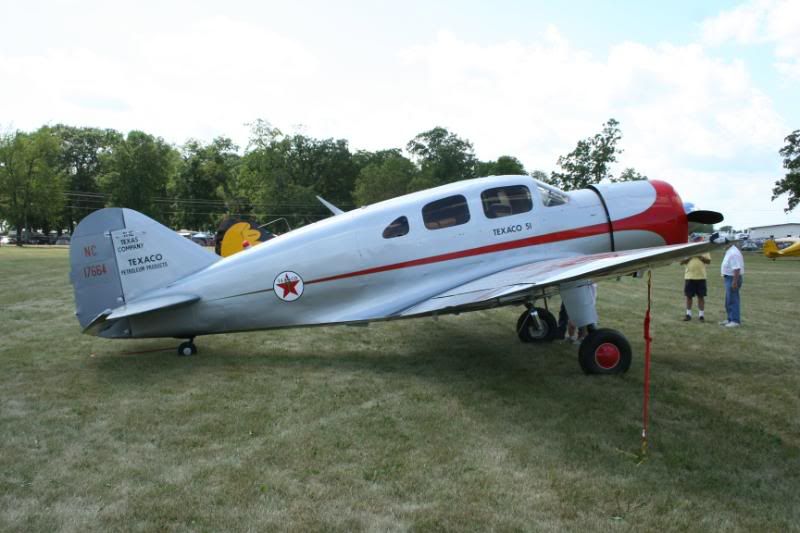
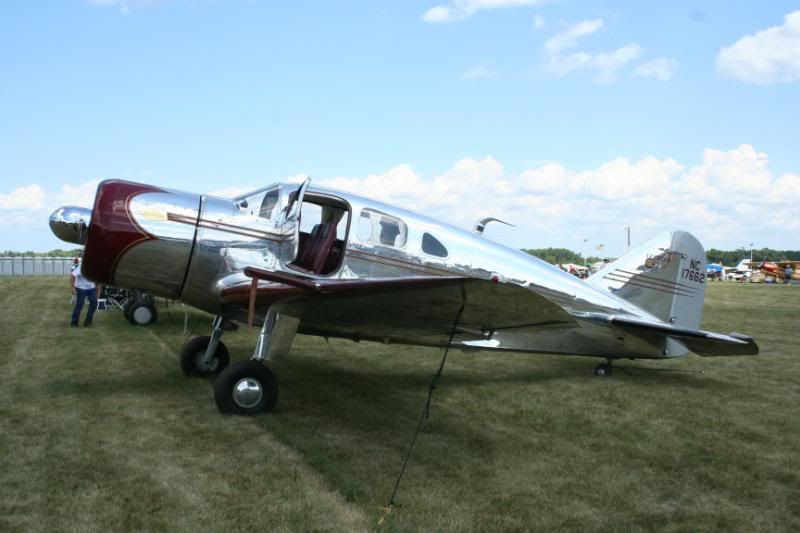
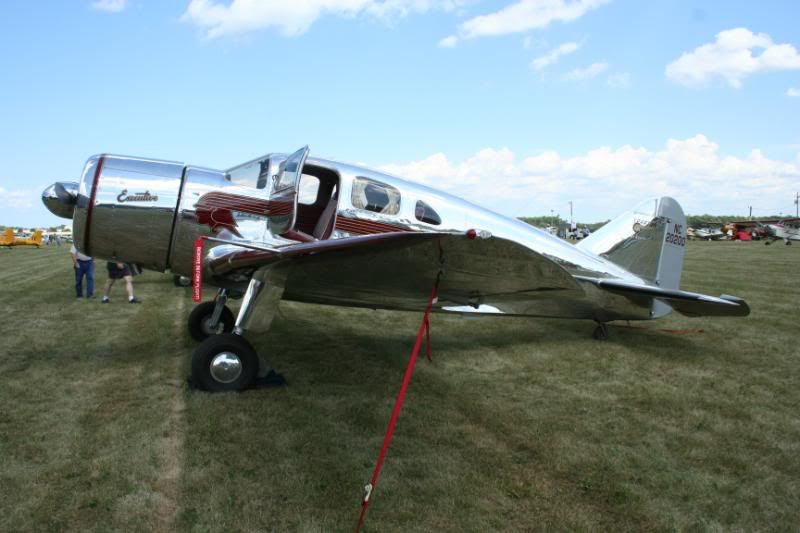




Tue Dec 23, 2008 1:03 am
wacokc
Nice Spartans! Available now (at least three of them) for 300-400k. Out of your price range? Yeah, mine too!
I'll post vintage shots of those tomorrow. I have a pretty good selection of them.
kevin
Nice Spartans! Available now (at least three of them) for 300-400k. Out of your price range? Yeah, mine too!
I'll post vintage shots of those tomorrow. I have a pretty good selection of them.
kevin
Spartans
Tue Dec 23, 2008 9:43 am
There is just something about the art deco look of the Spartan that really strikes a cord with me. The time in history that it was built produced a lot of amazing airplanes. The linemen use to seeing Waco's, Staggerwings, Stearmans and Travel Airs pull up to the gas pumps must have thought the Spartan was right out of the fantasy books!
N20200 has one of the coolest paint schemes flying right now!
N20200 has one of the coolest paint schemes flying right now!
Sat Dec 27, 2008 11:17 am
Here are a few shots we took at the Bartlesville Fly-In a number of years ago. The owners also had a restored Spartan mobile home in the hangar.




Scott




Scott
Sat Dec 27, 2008 2:03 pm
The Spartan Executive is one of my favorite vintage airplanes, and they look especially beautiful with a polished aluminum skin! Thanks to all for sharing the photos!
Dean
Dean
Sun Jan 04, 2009 10:11 pm
How many Spartans are still around and how many are airworthy ( or close to it)?
Sun Jan 04, 2009 11:41 pm
Doug,
If memory serves there are 22 Execs and the Model 12 tricycle gear variant remaining. All but three or so are airworthy or potentially so. Not a bad survivor count for a total production of 34 or 35 airplanes.
Scott
If memory serves there are 22 Execs and the Model 12 tricycle gear variant remaining. All but three or so are airworthy or potentially so. Not a bad survivor count for a total production of 34 or 35 airplanes.
Scott
Mon Jan 05, 2009 12:52 pm
Scott,
I think you're exactly right about the 22 Exec survivors, plus the Model 12. c/n 7 (NC17602) is a wreck, and c/n 3 (NC13993) is at the EAA museum and theoretically flyable but never flys. What other one/two aren't flyable?
Doug,
Don't forget that in addition to the Execs, there is one C-2 flying (with one in slow restoration to fly), two C-3s flying (with one more in restoration to fly) and the sole surviving NP-1 flying as well. No C-4 or C-5 aircraft are known to exist (unless someone out there's been hiding one in their barn.) The sole Zeus, an effort by Spartan to turn the Exec into a trainer/fighter/bomber that ended up looking a lot like a T-6, was supposedly scrapped after the end of WWII.
kevin
I think you're exactly right about the 22 Exec survivors, plus the Model 12. c/n 7 (NC17602) is a wreck, and c/n 3 (NC13993) is at the EAA museum and theoretically flyable but never flys. What other one/two aren't flyable?
Doug,
Don't forget that in addition to the Execs, there is one C-2 flying (with one in slow restoration to fly), two C-3s flying (with one more in restoration to fly) and the sole surviving NP-1 flying as well. No C-4 or C-5 aircraft are known to exist (unless someone out there's been hiding one in their barn.) The sole Zeus, an effort by Spartan to turn the Exec into a trainer/fighter/bomber that ended up looking a lot like a T-6, was supposedly scrapped after the end of WWII.
kevin
Spartans
Thu Jan 08, 2009 12:50 pm
There are a couple that are flyable but might not get much flight time.
s/n 16 I have pics of on the ground in AZ but no word of it flying recently
s/n 18 is a project in St. Louis.
Two under repair after landing accients.
About to release my updated web page on the Spartans. HOPEFULLY this weekend. Will notify when it is up.
s/n 16 I have pics of on the ground in AZ but no word of it flying recently
s/n 18 is a project in St. Louis.
Two under repair after landing accients.
About to release my updated web page on the Spartans. HOPEFULLY this weekend. Will notify when it is up.
Thu Jan 08, 2009 1:05 pm
Dan-
Thanks! I forgot about 18. I've got photos of it in progress around here somewhere, but had completely forgotten about it.
kevin
Thanks! I forgot about 18. I've got photos of it in progress around here somewhere, but had completely forgotten about it.
kevin
Thu Jan 08, 2009 8:25 pm
Okay, you've got my interest. Now tell me about the different models.
Fri Jan 09, 2009 4:26 am
If you are interested, my latest book ("Vintage Flyers II") has pictures of four execs (all air-to-airs), a C-2, a C-3, and the NP-1. All these pictures are color.
Fri Jan 09, 2009 10:49 am
Canso42,
Okay, here's the story (in brief).
Spartan Aircraft was founded by a guy named Willis Brown in downtown Tulsa, OK in about 1927 as Mid-Continent Aircraft Company. He was building an aircraft in a former garage that he called the "Spartan." W.G. Skelly, a well-known oilman in Tulsa, heard about his efforts and went over to see his progress. Liking what he saw, he bought Brown's company and the prototype aircraft, and hired Brown to be the first manager of the new "Spartan Aircraft Company" in 1928.
The prototype aircraft seated 3 people, two in the front and one pilot in the back, and thus was designated the C-3 (Commercial-3 seater). This is one of the earliest C-3 aircraft, in Skelly Oil colors:
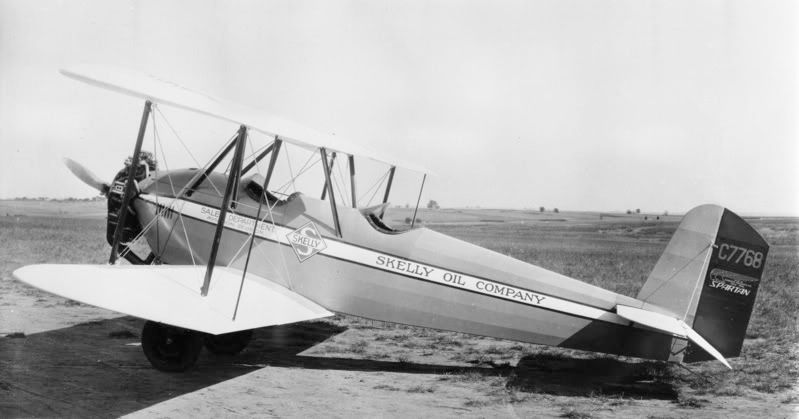
The C-3 was developed further, and went through some engine and design changes, culminating in the "ultimate" C-3, the C-3-225. The EAA and Spartan School both have C-3-225s, one of which is illustrated here:

While the C-3 was being marketed, the engineers decided there was a market for a smaller, more economical two seater. The decision was made to make this aircraft a monoplane, seating two people side-by side in a single cockpit. This aircraft is below:
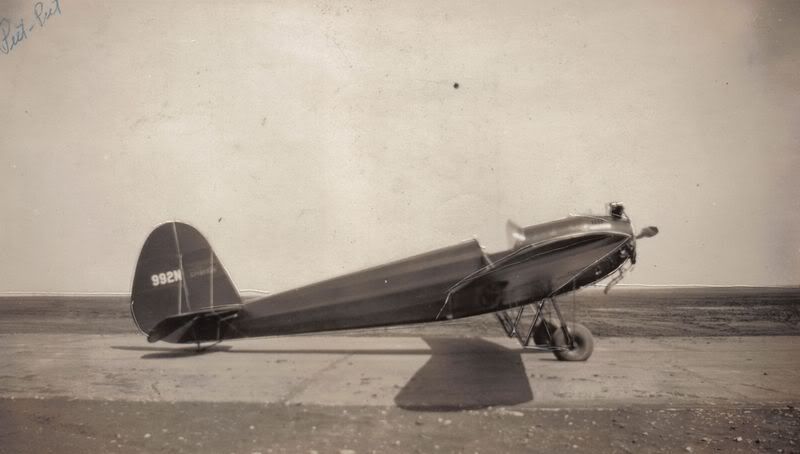
Some C-2s were built as trainers for Spartan and others, and had dual cockpits. About three were built this way, with some of them being used for "blind flying" instruction, with the back cockpit covered over by a big tarp.
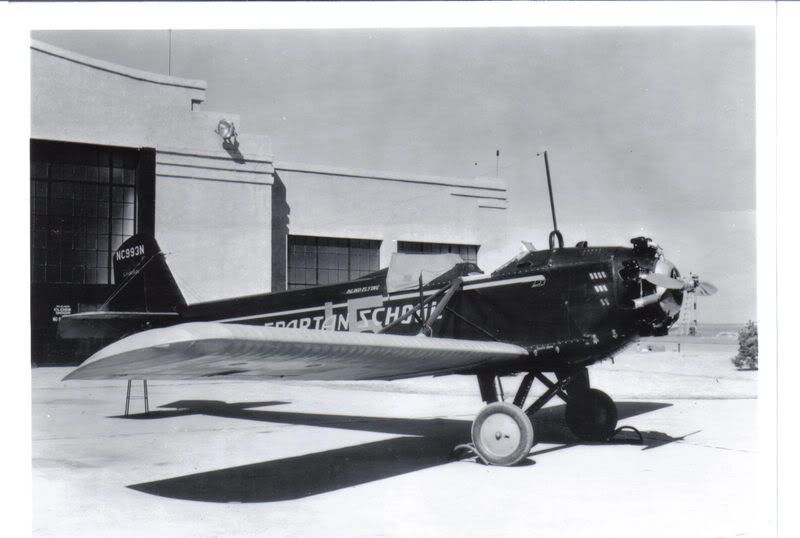
Also in development at the time, and produced in relatively small numbers, were the C-4 and C-5. These were enclosed-cabin aircraft with a high-wing monoplane design. As with the C-3, their biggest drawback was being quite expensive for the time and having other competing aircraft built by other manufacturers that were cheaper and more available. The C-4 and C-5 are below:
C-4
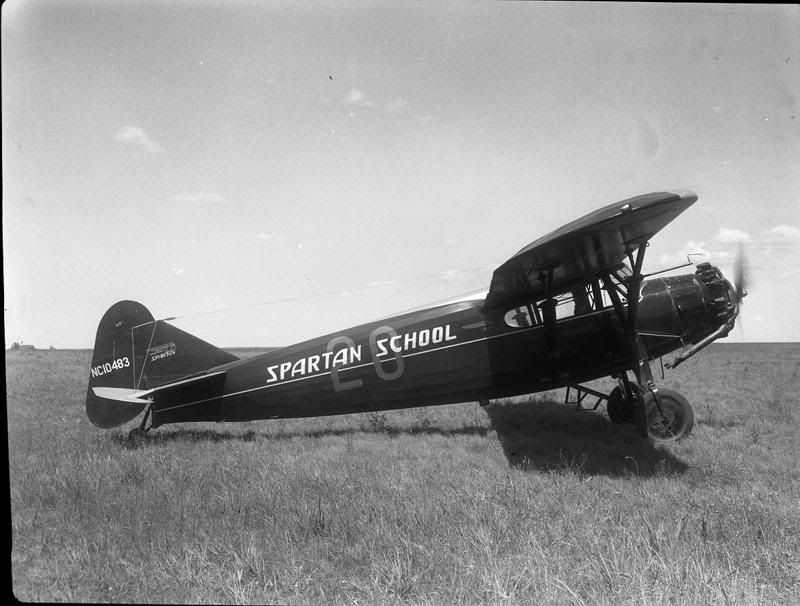
C-5
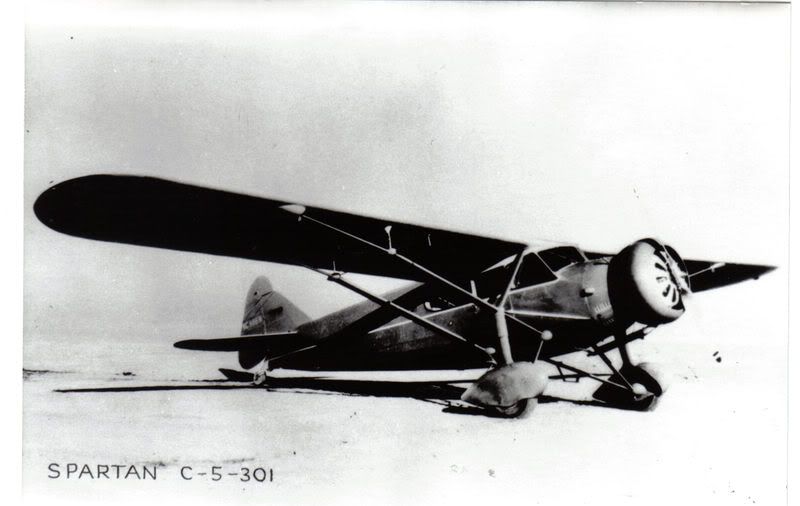
As the depression began, with sales of these aircraft low and the Spartan School having to mothball dozens of C-3 aircraft because of low enrollment in flight schools, the engineers at Spartan started desiging a revolutionary new aircraft targeted at businesses. The aircraft was to be a low-wing monoplane, using semi-monocoque construction. It was to be rugged and all-metal, with a climate-controlled enclosed cabin that would seat four or five comfortably. It would fly faster than most of the Army's existing pursuit aircraft, and would be strong and rugged enough to fly in and out of varieties of airports. This aircraft grew into the Spartan 7W, known as the "Executive." The prototype was extremely futuristic, with a small fin tail and a radically different looking cowling. See below:
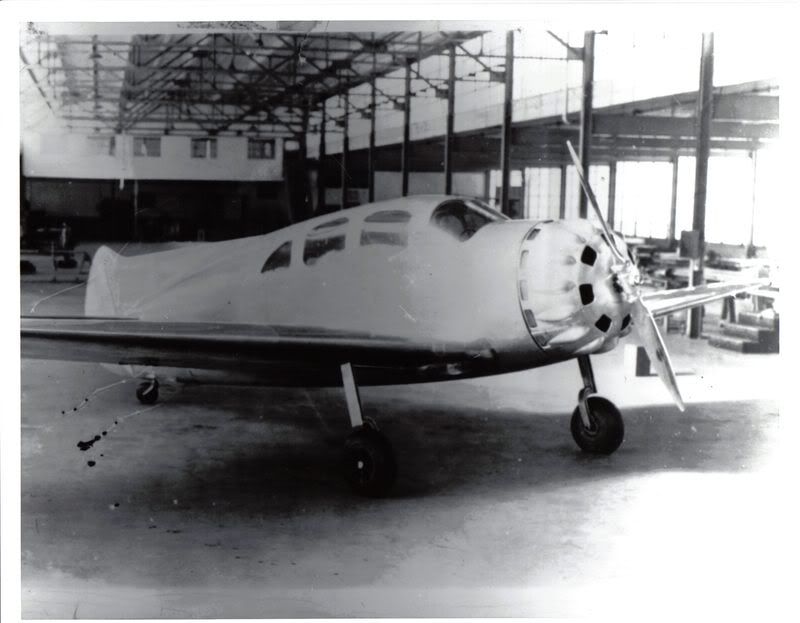
Those elements were determined to be impractical and created flight and mechanical problems, so they were modified by the engineers into the design that we know today:
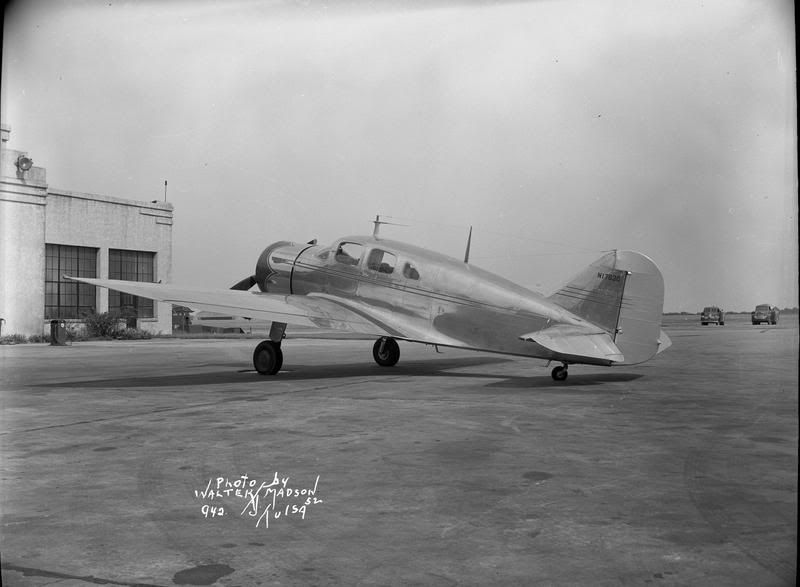
There were about 35 Executives produced, with a few other questionable airframes that may or may not have existed or been constructed for export. Of those, as has been mentioned before, about 22 still exist. The bulk of the ones that are missing were exported to Mexico and disappeared.
The Spartan engineers also believed that they could take the Executive design and modify it into a fighter/bomber/trainer in the mid-late 1930's. Trying to compete for a contract with the AAC or the Navy, the Spartan "Zeus" was completed and flown in demonstrations for the military. When they did not choose it for purchase, the aircraft was marketed to overseas militaries, including the Mexican air force. No buyer was ever found, and the one and only Zeus was ultimately retired to Spartan's hangars and used as an instructional airframe for the Spartan students before being scrapped post-war. It is below. You can definitely tell the family resemblance with the Executive, as it used basically the same undercarriage, wings and a modified tail.

Late in the 1930's, W.G. Skelly wanted to compete for a military contract for a biplane trainer. He asked his engineers to take the C-3 plans and to modify them into a military primary trainer. The fuselage was narrowed, the landing gear was modified, and other small changes were made to produce the NP-1. The prototype is below:
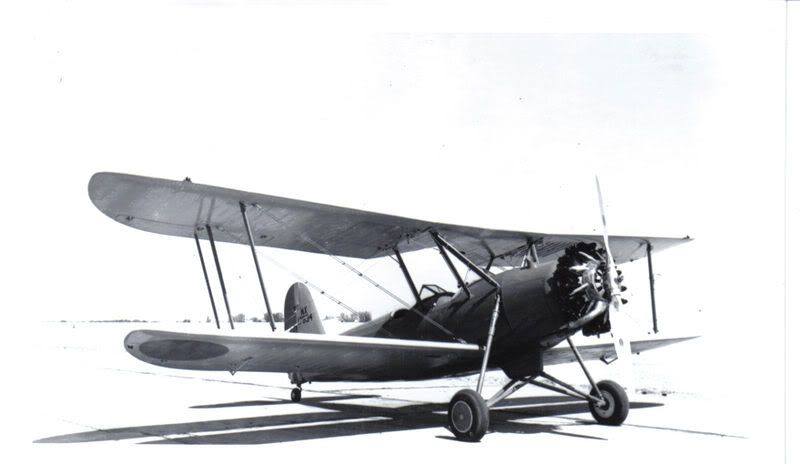
The army wasn't interested, but Skelly was ultimately able to sell it to the Navy. 200 examples were ordered, and Spartan produced one extra example as a gift to the Navy for a total production run of 201. The aircraft were expensive, difficult to fly, and duplicated the other more numerous trainers that by the early part of the war were being produced in greater numbers- the N3N and the Stearman. As a consequence, the Navy didn't order any more and (since Spartan was losing money on each NP-1) Spartan didn't mind. The production example evaluated by the Navy is below:
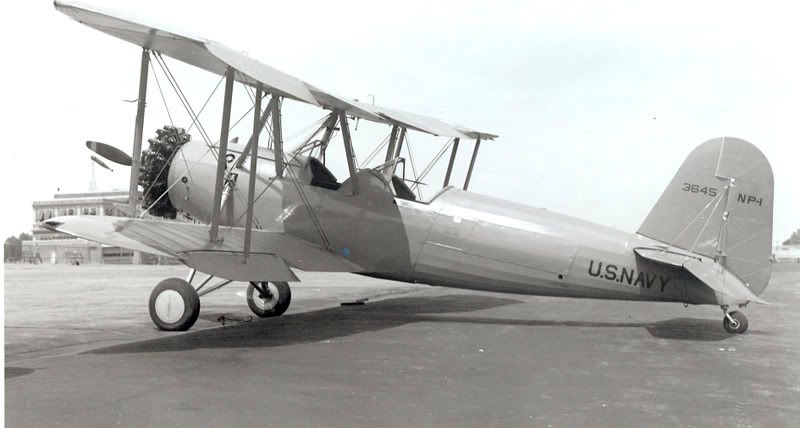
The NP-1's big claim to fame, though, took place in November 1942 when future president George H.W. Bush made his first solo flight at Minneapolis in a Spartan NP-1.
As the war was winding down, John Paul Getty, who had purchased all of the Spartan assets from Skelly and had taken over the company, thought there would be market for an improved Executive. He ordered the engineers to make some significant improvements on the Executive design, which resulted in the tricycle-geared Model 12.
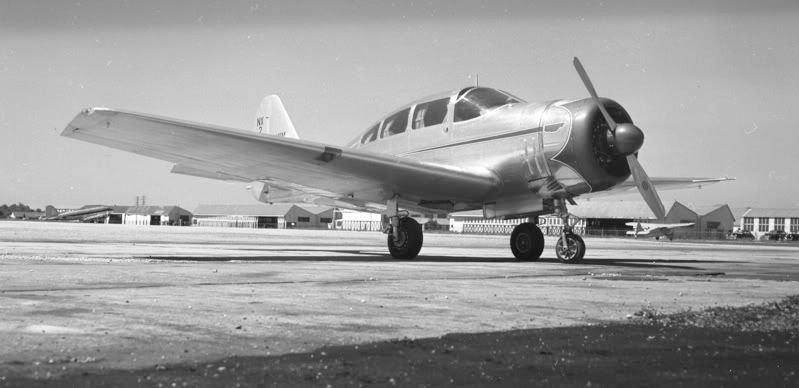
When Getty realized that the market was about to be flooded with surplus military aircraft like the C-47 and the A-26 that could be converted to executive transports, he cancelled the Model 12 program, thus making the prototype the only Model 12 ever produced. It still exists today, and is in California.
Getty, anticipating the flood of returning veterans and their desire to travel the country, shifted Spartan into building high-quality travel trailers. The Model 12 was the last aircraft Spartan ever constructed. The assets of the company were sold in the 1960's, and the factory is now used by Crane Carrier Company. Of all of the Spartan aircraft produced, here are the approximate numbers of survivors (as best I can tell).
C-2 4 out of 20-30
C-3 5 out of 100-200 (unknown total)
C-4 0 out of 8 or so
C-5 0 out of 3
Executive 22 out of 35
NP-1 1 out of 202 (plus wrecked remenants, maybe adds one)
Zeus 0 out of 1
Model 12 1 out of 1
So about 33-34 survive out of a total production between 350 and 500 aircraft, with 22 of those survivors being Executives.
How's that?

kevin
Okay, here's the story (in brief).
Spartan Aircraft was founded by a guy named Willis Brown in downtown Tulsa, OK in about 1927 as Mid-Continent Aircraft Company. He was building an aircraft in a former garage that he called the "Spartan." W.G. Skelly, a well-known oilman in Tulsa, heard about his efforts and went over to see his progress. Liking what he saw, he bought Brown's company and the prototype aircraft, and hired Brown to be the first manager of the new "Spartan Aircraft Company" in 1928.
The prototype aircraft seated 3 people, two in the front and one pilot in the back, and thus was designated the C-3 (Commercial-3 seater). This is one of the earliest C-3 aircraft, in Skelly Oil colors:

The C-3 was developed further, and went through some engine and design changes, culminating in the "ultimate" C-3, the C-3-225. The EAA and Spartan School both have C-3-225s, one of which is illustrated here:

While the C-3 was being marketed, the engineers decided there was a market for a smaller, more economical two seater. The decision was made to make this aircraft a monoplane, seating two people side-by side in a single cockpit. This aircraft is below:

Some C-2s were built as trainers for Spartan and others, and had dual cockpits. About three were built this way, with some of them being used for "blind flying" instruction, with the back cockpit covered over by a big tarp.

Also in development at the time, and produced in relatively small numbers, were the C-4 and C-5. These were enclosed-cabin aircraft with a high-wing monoplane design. As with the C-3, their biggest drawback was being quite expensive for the time and having other competing aircraft built by other manufacturers that were cheaper and more available. The C-4 and C-5 are below:
C-4

C-5

As the depression began, with sales of these aircraft low and the Spartan School having to mothball dozens of C-3 aircraft because of low enrollment in flight schools, the engineers at Spartan started desiging a revolutionary new aircraft targeted at businesses. The aircraft was to be a low-wing monoplane, using semi-monocoque construction. It was to be rugged and all-metal, with a climate-controlled enclosed cabin that would seat four or five comfortably. It would fly faster than most of the Army's existing pursuit aircraft, and would be strong and rugged enough to fly in and out of varieties of airports. This aircraft grew into the Spartan 7W, known as the "Executive." The prototype was extremely futuristic, with a small fin tail and a radically different looking cowling. See below:

Those elements were determined to be impractical and created flight and mechanical problems, so they were modified by the engineers into the design that we know today:

There were about 35 Executives produced, with a few other questionable airframes that may or may not have existed or been constructed for export. Of those, as has been mentioned before, about 22 still exist. The bulk of the ones that are missing were exported to Mexico and disappeared.
The Spartan engineers also believed that they could take the Executive design and modify it into a fighter/bomber/trainer in the mid-late 1930's. Trying to compete for a contract with the AAC or the Navy, the Spartan "Zeus" was completed and flown in demonstrations for the military. When they did not choose it for purchase, the aircraft was marketed to overseas militaries, including the Mexican air force. No buyer was ever found, and the one and only Zeus was ultimately retired to Spartan's hangars and used as an instructional airframe for the Spartan students before being scrapped post-war. It is below. You can definitely tell the family resemblance with the Executive, as it used basically the same undercarriage, wings and a modified tail.

Late in the 1930's, W.G. Skelly wanted to compete for a military contract for a biplane trainer. He asked his engineers to take the C-3 plans and to modify them into a military primary trainer. The fuselage was narrowed, the landing gear was modified, and other small changes were made to produce the NP-1. The prototype is below:

The army wasn't interested, but Skelly was ultimately able to sell it to the Navy. 200 examples were ordered, and Spartan produced one extra example as a gift to the Navy for a total production run of 201. The aircraft were expensive, difficult to fly, and duplicated the other more numerous trainers that by the early part of the war were being produced in greater numbers- the N3N and the Stearman. As a consequence, the Navy didn't order any more and (since Spartan was losing money on each NP-1) Spartan didn't mind. The production example evaluated by the Navy is below:

The NP-1's big claim to fame, though, took place in November 1942 when future president George H.W. Bush made his first solo flight at Minneapolis in a Spartan NP-1.
As the war was winding down, John Paul Getty, who had purchased all of the Spartan assets from Skelly and had taken over the company, thought there would be market for an improved Executive. He ordered the engineers to make some significant improvements on the Executive design, which resulted in the tricycle-geared Model 12.

When Getty realized that the market was about to be flooded with surplus military aircraft like the C-47 and the A-26 that could be converted to executive transports, he cancelled the Model 12 program, thus making the prototype the only Model 12 ever produced. It still exists today, and is in California.
Getty, anticipating the flood of returning veterans and their desire to travel the country, shifted Spartan into building high-quality travel trailers. The Model 12 was the last aircraft Spartan ever constructed. The assets of the company were sold in the 1960's, and the factory is now used by Crane Carrier Company. Of all of the Spartan aircraft produced, here are the approximate numbers of survivors (as best I can tell).
C-2 4 out of 20-30
C-3 5 out of 100-200 (unknown total)
C-4 0 out of 8 or so
C-5 0 out of 3
Executive 22 out of 35
NP-1 1 out of 202 (plus wrecked remenants, maybe adds one)
Zeus 0 out of 1
Model 12 1 out of 1
So about 33-34 survive out of a total production between 350 and 500 aircraft, with 22 of those survivors being Executives.
How's that?
kevin
Fri Jan 09, 2009 11:14 am
All I can say is Excellent Response!
Fri Jan 09, 2009 12:55 pm
Great material! Thanks, Kevin!